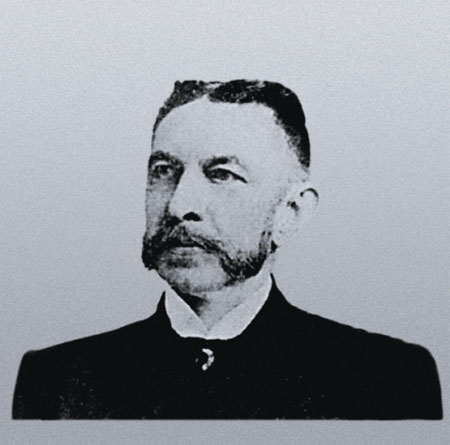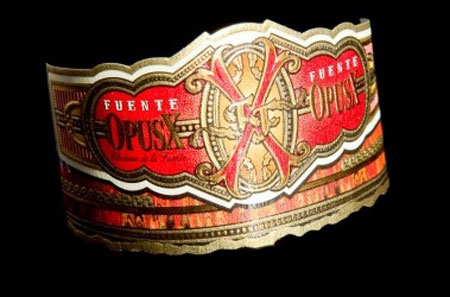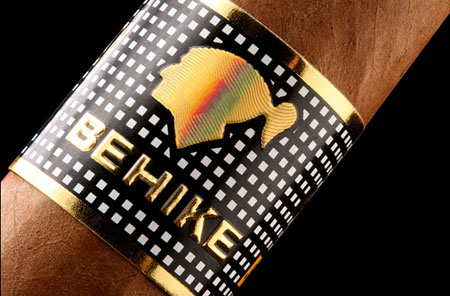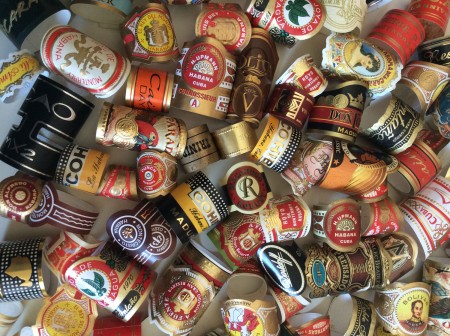I was recently contacted by Luca Cominelli, editor of an Italian magazine about cigars, CigarsLover. They are at their 6th issue now and the current issue has been translated into English. I checked out the magazine and I can say that CigarsLover’s team is doing a great job – there’s a lot of interesting content. You will find below an article from this issue about cigar bands, written by Paolo Topa. You can download the full issue here.
The band represents an iconic image for the contemporary smoker, influenced by different factors including the marketing operations of a brand and their need to distinguish themselves from others.
In the past, cigars didn’t have this accessory. They were just packed with the origin label. In 1830, Gustave Bock, head of a Cuban cigar firm, came up with the revolutionary idea to introduce a recognition system for cigars, in order to avoid counterfeiting when exported to the European continent. His idea was simple and very close to our modern copyright: put a paper band with his signature on each cigar so that no one could steal his work. From that moment on, the band became a necessary element to distinguish one cigar from another. Some people believe the band has a second, more practical, aim: protecting smokers’ gloves. In this context we can compare the band with the “Smoking” – born as a smoking jacket aimed to preserve gentlemen’s clothing.


Among the most original bands we can find are Arturo Fuente’s Opus X, Don Pepin Garcia’s Flor de las Antillas (made with pastel colours) and Ashton’s San Cristobal (known as Paradiso in Europe because of the contrast with the same Cuban brand). In regards to Cuban bands, the most unique and artistic ones are Hoyo de Monterrey, Bolivar and El Rey del Mundo, while the simplest are Montecristo (actually on the path of modernization), Sancho Panza and Vegas Robaina.
It’s important to note the most recent trend, which is to include a second band to recognize “Limited Editions”, “Regional Editions”, “Reserva” and “Gran Reserva”, in order to give more prestige and exclusivity to the product. Some Caribbean producers are including even a third label to the foot of the cigar, in order to add another layer of protection.
It is very interesting to note the fact that even though paper is the norm, recently other materials have been introduced: Pitbull uses a woolen yarn while Don Pepin Garcia adds a satin band at the foot of the cigar. These are two clear examples of brands that want to break free from tradition and set their products apart from others, a need felt by several producers. Sometimes it is possible to find bigger bands, like Alec Bradley’s “Black Market”, that cover almost all the entire cigar.
Another aspect to take into consideration is the fight against counterfeiting. Almost immediately after the introduction of bands, counterfeiters have been able to perfectly copy the bands of some of the most iconic Cuban brands starting with Cohiba and trickling down to Montecristo and Partagas. Recently, the best anti-counterfeiting system is the one adopted by Cohiba’s Behike line. This system has been extended to other productions of the same brand such as the Piramide Extra and the new Robusto Supremo El 2014, and includes a hologram that is not easy to copy. It is clear that even though technological instruments are different, the aim has always been the same since the nineteenth century: protect the brand. Unfortunately, the war is still not won.

In the world of bands, colourful, artistic and unique ones have created their own collectors market; here, people try to discover different kinds of bands, from the rare ones to the most historically relevant ones and to those with an important artistic design. Some smokers store them to remember their smoking experiences while others try to re-use them in an artistic way by creating objects or pictures used to decorate their smoking rooms. The question is: what is the best way to protect the band? Remove it before starting to smoke is not the best option. The band is glued onto the cigar and it is better to wait for the cigar to heat up in order to remove it with greater ease. After the cigar heats up, use two fingers, moving the band in different directions in order to remove it without inflicting damage on the cigar. Be very careful; if this method isn’t effective after two or three movements, it’s best to wait a bit since the cigar is far more important than the band.
The last aspect of the band to take into consideration is the psychological one: are we sure that this identification system doesn’t mislead us when it’s time to value the quality of a cigar? How much can a prestigious band or two bands influence the perception of a cigar? To make this determination, several professional tastings have been organized, referred to as Blind tastings, and their specific aim is to remove the influence of a particular band’s presence. However, the second question that comes to mind is: what would a cigar be without its band? In Australia, for example, it is compulsory to replace the original bands with generic band on all cigars, in order to homogenize them on the market avoiding the presence of other damaging products. The consequence of this decision, however, has been the collapse of sales, demonstrating that the cigar also evokes an image where packaging plays a role and adds to the consumer’s desire to enjoy a satisfying product: herein lies the meaning of the band.
Article by Paolo Topa


I am very new in the cigar world. I started in December 2014 with and I find cigars very fascinating and really want to learn everything I can about it. This article from cigar inspector is awesome and very informative. I am very glad that I subscribed to cigar inspector.